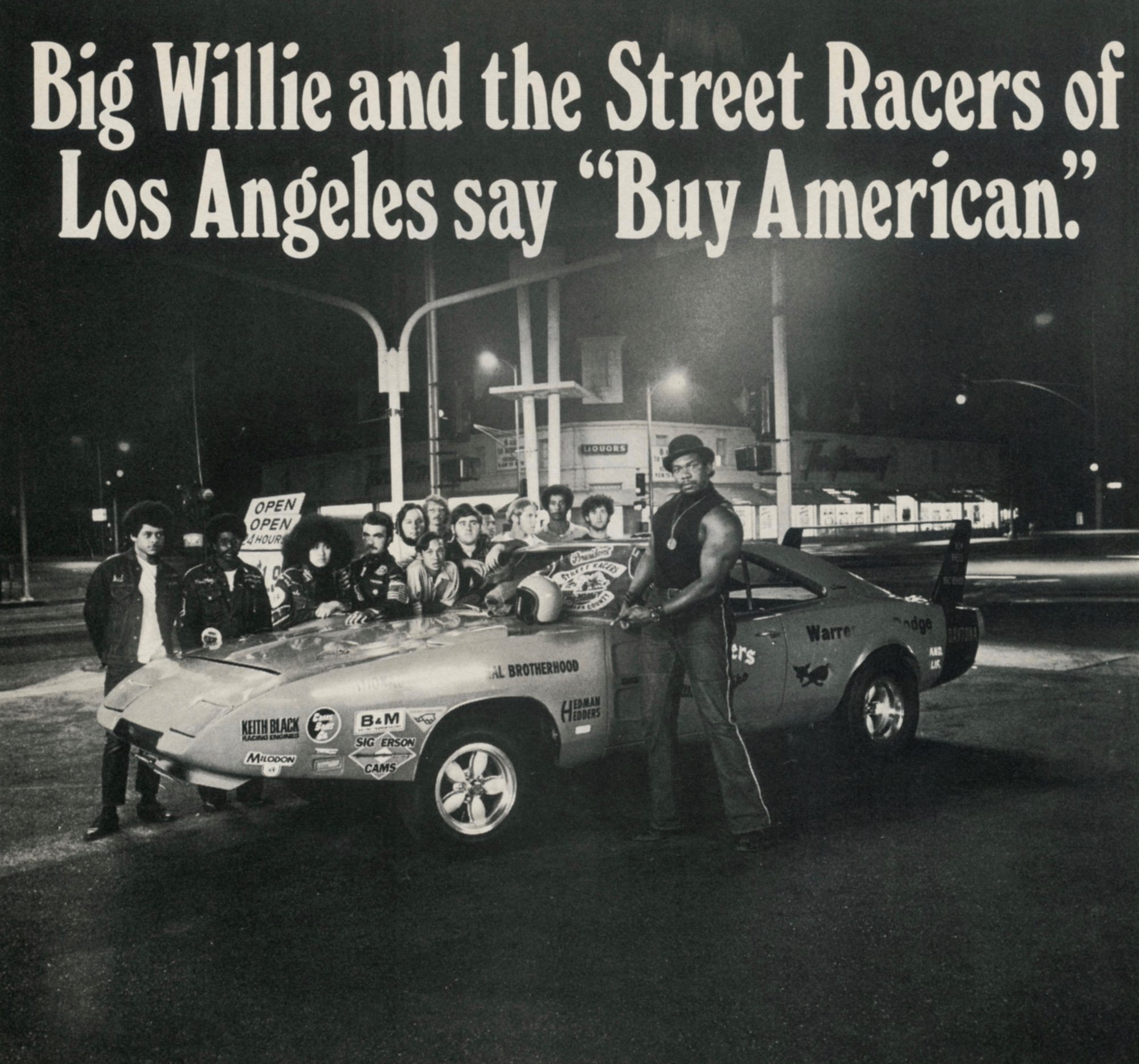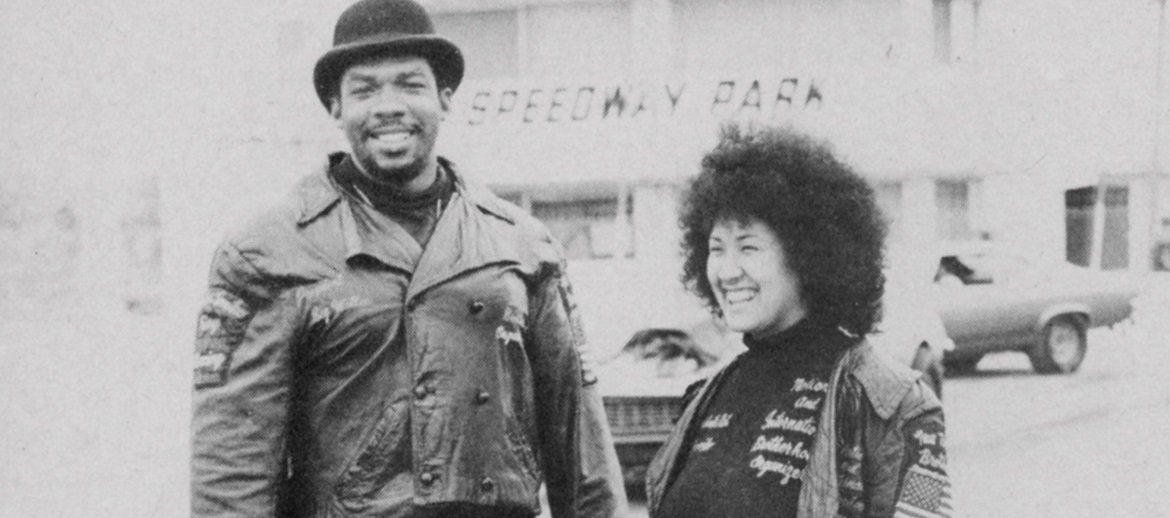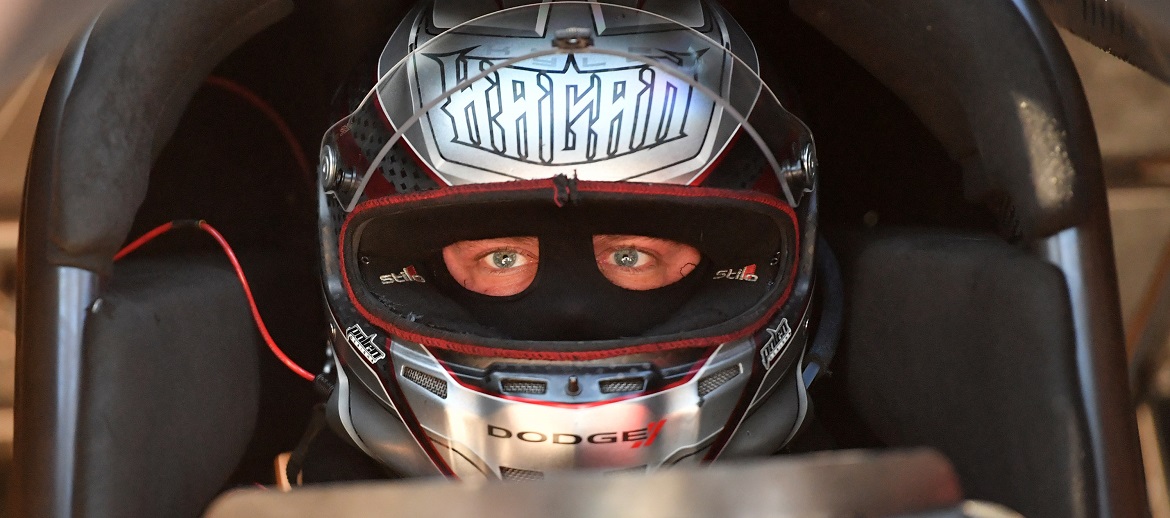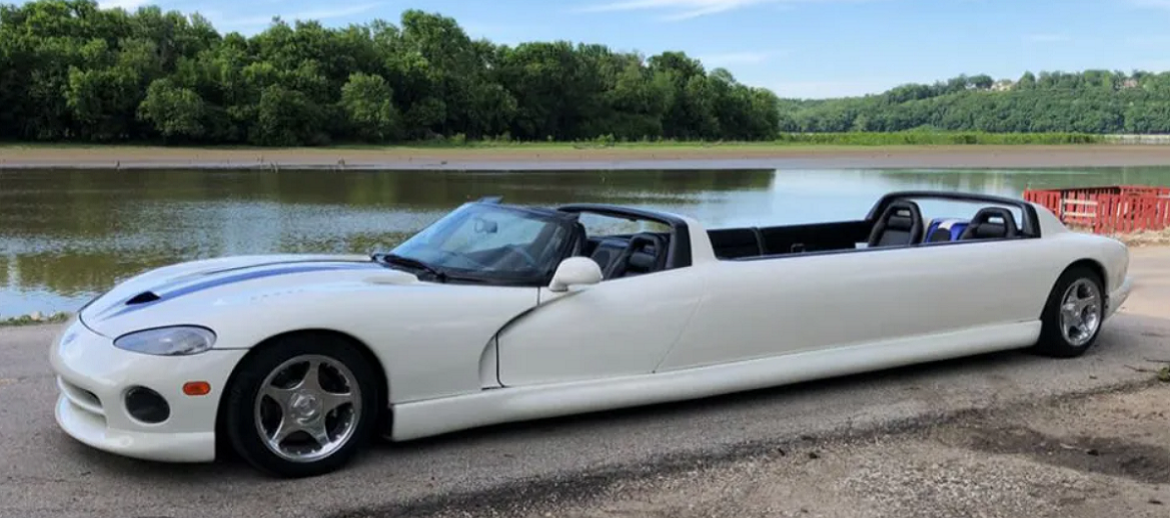A Look Back at Big Willie Robinson and His King Daytona
3 years ago Heritage
Dodge recently introduced the limited-edition King Daytona package for the 2023 Dodge Charger SRT® Hellcat Redeye. Due to the involvement of “The King” Richard Petty, some people believe that this Daytona is designed to pay tribute to that NASCAR legend, but that isn’t the case at all. The King Daytona was introduced to pay tribute to Big Willie Robinson – a pioneer in the African American racing community and a legend among street racers around the world – who did his best-known racing in an orange 1969 Dodge Charger Daytona.
Today, we bring you a look at the life of Robinson and how his Daytona racecars became such unmistakable installations in the Southern California racing scene.
Introducing Big Willie Robinson

Willie Andrew Robinson III was born and raised in New Orleans, Louisiana, in 1942, growing to be a massive young man, standing 6’6” and weighing more than 300 pounds. Boasting a 58-inch chest and 21-inch biceps, Robinson was bigger than most NFL lineman of the era, but due to the fact that he was African America, he was not permitted to play on the LSU football team, even though he was a student there. In 1960, Robinson came out of class one day to find that his prized 1953 Oldsmobile 98, which had been given to him by his father, had been badly damaged by vandals. This led him to leave the segregated New Orleans area and head to California, where he attended UCLA in the early 1960s.
During his time at UCLA, Robinson’s parents got divorced and that led to difficulties in paying for his college education. To make ends meet, Big Willie got a job at a local body shop and it was around this time that he began making a name for himself in the SoCal street racing scene. However, his rise to street racing fame was interrupted when he was drafted by the U.S. Army. After a short stint in the U.S. Army, Robinson was discharged and sent back to the Los Angeles area.
It was around this time that Robinson really began to take over the L.A. street racing scene, but following the Watts Riots of 1965, racial tensions were as high in Southern California as they were everywhere else in the country and at the same time, gang violence in SoCal was on the rise. Rather than picking a side and participating in the violence, Robinson saw a way to peacefully unite people of all races with horsepower.
In 1968, with support from the Los Angeles Police Department, Big Willie Robinson founded the International and National Brotherhood of Street Racers. Robinson recognized the fact that drag racers came from all walks of life and racing events created a setting where everyone got along – focusing on cars and racing rather than misplaced anger and hate. His mantra during this time was “if you’re racing, you’re not killing.”
At first, the International and National Brotherhood of Street Racers hosted weekend pop-up drag racing events around L.A., often in violence-heavy areas like Compton or Watts. The police would close down a mile-long section of public road and let Robinson’s organization host a drag racing event, often drawing tens of thousands of people to race and watch. The only rules to join the Brotherhood and participate in the racing events were that you agreed to race under safe supervision, you don’t use alcohol or drugs, you don’t participate in violence and you agree to drive reasonably when coming to or leaving events. In short, members of the International and National Brotherhood of Street Racers promised to race in safe settings while sober and without starting fights, and there were to be no burnouts or crazy driving stunts around the drag racing events.
This led to a reduction in violence, giving gearheads a healthy way to spend their weekends, but as drag racing became more popular in SoCal, so did street racing. The increase in street racing activity created its own issues, but Big Willie had a solution for that as well.

In 1974, Big Willie Robinson and his wife, Tomiko, opened Brotherhood Raceway Park on Terminal Island in the San Pedro area of L.A. The decommissioned Navy airfield made a perfect drag racing venue, allowing Robinson and his Brotherhood of Street Racers somewhere to race that didn’t include public roads. The organization used the guard rail materials from the Long Beach Grand Prix course when it wasn’t being used and paid the Harbor Commission rent of $1,000 per month for use of the facility. While his racing program had already helped to reduce violent activities in the L.A. area, the opening of Brotherhood Raceway Park cut down on street racing and racing-related accidents. Once racers passed the basic safety inspection, it cost just $10 to race in the safe confines of the Terminal Island track.
He would continue to use the track and his racing association to bring people together until the track closed in 1984, but through his persistence, Robinson convinced the Los Angeles Harbor Commission to reopen the track facility from 1993 through 1995. It was during this time that Robinson made a famous comment in a Sports Illustrated interview that clearly defined the scope of his actions, bringing together people who would typically never consider spending time in a social setting with some other people in the racing community – if not for the racing community.
“Black, white, yellow, brown, skinheads, Nazi party members, Muslims, we got ’em all,” said Robinson. “They’re all here at the track, and they’re communicating. And once they start communicating, they start liking each other, and once they start liking each other, they forget about the hate.”
Sadly, the California government opted to transform Terminal Island into a storage facility for coal supplies and shipping containers, bringing about an end to the racing program in 1995. However, from 1974 through 1984 and 1993 to 1995, Big Willie Robinson, his International and National Brotherhood of Street Racers and Brotherhood Raceway Park all played a massive role in easing racial tensions and reducing crime – both violent and non-violent – in the Los Angeles area. There is no question that some lives were saved by his drag racing programs while others were changed for the better, giving young gearheads a place to meet people from other racial groups in a setting where they were all working toward the common goal of going fast and winning races.
While the International and National Brotherhood of Street Racers was founded in and had its greatest impact on the local community in Southern California, the organization would grow to reach a peak of some 80,000 members in 38 U.S. states and 9 countries around the world. While his efforts had an immeasurable impact on preventing violent crimes and street racing-related incidents in the ’60s, ’70s, ’80s and ’90s, he also had a major impact on the drag racing world in general. The Brotherhood brought people together and in doing so, introduced the sport to many new people around the world.
The King Daytona
You likely noticed that nowhere above did we mention a Dodge product. Sometime after founding the International and National Brotherhood of Street Racers in 1968, Big Willie acquired a pair of 1969 Dodge Charger Daytonas – one in orange with a black tail stripe and one in green with a white tail stripe. Rumors that will never be confirmed suggest that the Chrysler Corporate gave Big Willie the orange car while the green car was purchased at a low, special price.
He would drive and race the orange car and his wife, Tomiko, drove and raced the green car. Both Charger Daytonas were decorated for track action, with the International and National Brotherhood of Street Racers logo on the doors, the Keith Black Racing Engines logo on the front fenders, Willie and Tomiko’s names on the quarter panels and unique “graffiti” on the Daytona tail stripe. The stripe on Big Willie’s orange car had the word “King” painted over the Daytona logo while Tomiko’s car had “Queen” painted just below the base of the huge rear wing. Also, the orange car had “Big Willie and Tomiko” on the rear quarters while her green car said “Tomiko and Big Willie”, putting preference to the name of the person who drove and raced each car.
Also, while Big Willie’s Daytona was heavily modified to serve as a full-blown racecar, including acid-dipping the body to remove weight, Tomiko’s Daytona was closer to stock, featuring full interior and all of the items needed to serve as the tow vehicle for the orange car. Early on, Big Willie relied on a modified 426 HEMI® engine, but he would eventually swap in a 556-cubic-inch HEMI engine from Keith Black Racing Engines. The aftermarket hood of those HEMI engine-powered cars carried the moniker “African Elephant” to signify that HEMI engine power under the hood. Unfortunately, years of racing the acid-dipped orange King Daytona with that monster KB HEMI engine power destroyed the car, forcing Robinson to retire it from racing while the Queen Daytona car was lost in an on-track crash sometime in early 1973.
It was around that time when the Robinsons acquired their third 1969 Dodge Charger Daytona. This third-and-final Charger Daytona owned by Big Willie was a red car that had been painted off-white and decorated like the orange and green cars. This car, known as the Duke and Duchess car, was believed to have been used for promotional purposes and not as a racecar. When Big Willie sold the car to a Mopar® collector named Gary French in 2002, he stated that it hadn’t been raced, but the damage to the steel differential snubber plate from hard launches told a different story. Also, drag racing spectators who saw Big Willie race in person in the mid-to-late 1970s have reported seeing the Duke and Duchess Daytona on the track with one of the Keith Black HEMI engines from one of the original two cars, but he parked it in his backyard and focused on his HEMI engine-powered Barracuda drag car. At some point, the original 440 engine was reinstalled before being sold to French in 2002. French sold the car in 2006 to a clothing designer named Donwan Harrell, who had it until 2010 when it was sold once again, that time to Corey Owens of Ogilvie Collision in Minnesota. Owens considered restoring it to racing form, essentially preserving the patina as best he could, but it was in too poor of shape to go that route. Instead, he restored the car to its original form just after Robinson would have acquired the car. This included the numbers-matching 440 and 727 transmission, along with the off-white paint and the logos that were found on all of the Big Willie Daytonas. Owens did locate the owner of one of the aluminum Keith Black Racing HEMI engines that may have been used to get this car down the track, but when the then-owner wanted too much money, Robinson opted for the original 440.
Once the restoration project was complete, the restored Duke and Duchess Daytona was sent to the Barrett-Jackson Scottsdale Auction, where it sold for just $154,000. That seemed like a low price for a numbers-matching 1969 Dodge Charger Daytona, but we have to wonder if buyers with fatter wallets were turned off by the aftermarket wheels and the unique racing livery.
Tomiko Robinson passed away in 2007, which reportedly led to a quick decline in the health of Big Willie, who passed away in 2012. However, his legacy will forever live on in the SoCal racing scene and in the world of drag racing in general. While the orange 1969 King Daytona Charger disappeared long ago, the 2023 Dodge Charger SRT Hellcat Redeye King Daytona package introduces the modern Brotherhood of Muscle to the legendary street racer.




